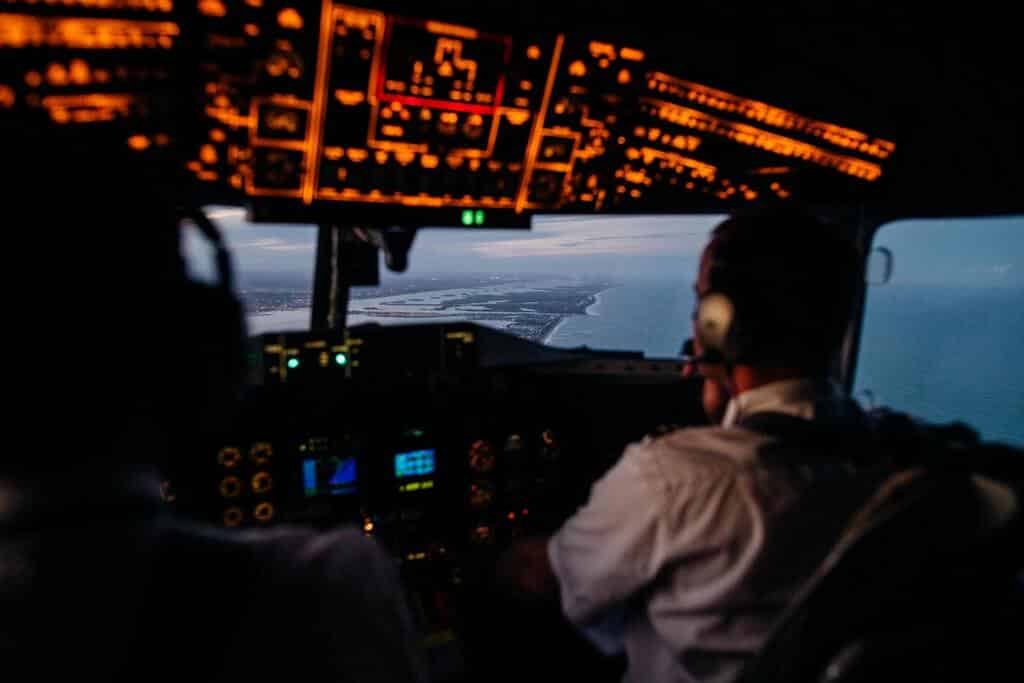The skies above us are a complex network of airways for commercial airliners carrying passengers and cargo across continents.
At the heart of safe and efficient navigation of these air routes lies Global Navigation Satellite Systems (GNSS), with GPS playing a critical role.
However, the increasing prevalence of GPS jamming and spoofing disrupts this vital technology, posing a significant threat to commercial aviation and safe navigation.
Understanding GPS Interference: Jamming vs. Spoofing
In very recent years, Global Navigation Satellite System (GNSS) jamming and spoofing incidents have increasingly threatened the integrity of Positioning, Navigation, and Timing (PNT) services across Eastern Europe and the Middle East.
GPS Jamming
GPS jamming involves deliberately flooding the airspace with radio signals on the same frequency as legitimate GPS signals. Imagine it as trying to listen to a faint conversation in a crowded room filled with people shouting.
This overpowering noise makes it impossible for the aircraft’s receiver to pick up the authentic GPS signal, rendering it navigationally blind.
Aircraft equipped with advanced Inertia Reference Systems (“IRS”) can still operate reasonably when GPS signals are jammed. However, GPS Spoofing has become a new and more dangerous threat.

GPS Spoofing
Spoofing, on the other hand, is a more sophisticated attack. Here, malicious actors broadcast fake GPS signals that mimic real ones.
This can trick an aircraft navigation system into believing it’s somewhere entirely different. Imagine the conversation you’re trying to listen to is now being deliberately manipulated, feeding you false information.
The Consequences
The consequences of both jamming and spoofing can be severe. Pilots may lose crucial position information, leading to:
- Incorrect positioning: With unreliable GPS data, pilots struggle to determine their exact location, making it difficult to follow the planned flight path.
- Deviations from course: The aircraft could accidentally veer off course, potentially entering restricted airspace or endangering other flights.
- Loss of navigational capability: In a worst case scenario, pilots might completely lose the ability to navigate using GPS, calling for flight crew to rely on backup systems.

A Growing Threat: Incidents on the Rise
While GPS jamming and spoofing have existed for some time, recent years have seen a worrying increase in incidents.
The European Union Aviation Safety Agency (EASA) has reported a rise in incidents, particularly in Eastern Europe and the Middle East. Airlines are seeing a significant rise in incidents of GNSS interference.
This trend is concerning, highlighting the growing potential for these attacks to disrupt air travel.
The motivations behind jamming and spoofing can vary. It could be a deliberate attempt to disrupt military operations, a criminal ploy to extort airlines, or even an act of vandalism.
Regardless of the motive, the impact on commercial aviation is clear. Delays, cancellations, and even near misses become a possibility, jeopardizing passenger safety and causing economic losses.

Taking Flight: Mitigating the Risks
Fortunately, the aviation industry is not sitting idly by. Here are some ways we are working to mitigate the risks:
- Enhancing Detection and Alert Systems: Developing robust systems to detect and alert pilots of potential GPS interference is crucial. This allows for timely action and rerouting if necessary.
- Strengthening Regulations: Regulatory bodies are collaborating to establish stricter regulations on the sale and use of devices capable of GPS jamming or spoofing.
- Fortifying Aircraft Systems: Research is underway to develop more robust GPS receivers that are less susceptible to jamming and spoofing attempts. This could involve multi-frequency receivers or advanced signal authentication techniques.
- Pilot Training: Pilots are undergoing specialized training to recognize the signs of GPS interference and respond appropriately. This includes practicing navigation using backup systems like Inertial Reference Systems (IRS) and ground-based radio navigation aids like VOR/DME.
Engaging Airlines and Regulators
Combating the threat of GPS jamming and spoofing requires a collaborative effort. Passengers can stay informed about the issue and be prepared for potential delays.
Airlines need to invest in robust detection systems and pilot training. Finally, regulators must work together to implement stricter regulations and foster technological advancements to safeguard the skies.
By working together, the industry can ensure that GPS remains a reliable tool for commercial aviation, prioritizing the safety of passengers and the smooth operation of air travel.

Click the banner to subscribe to our weekly newsleter.

Click the photo to join our WhatsApp channel so then you can stay up to date with everything going on in the aviation industry!









